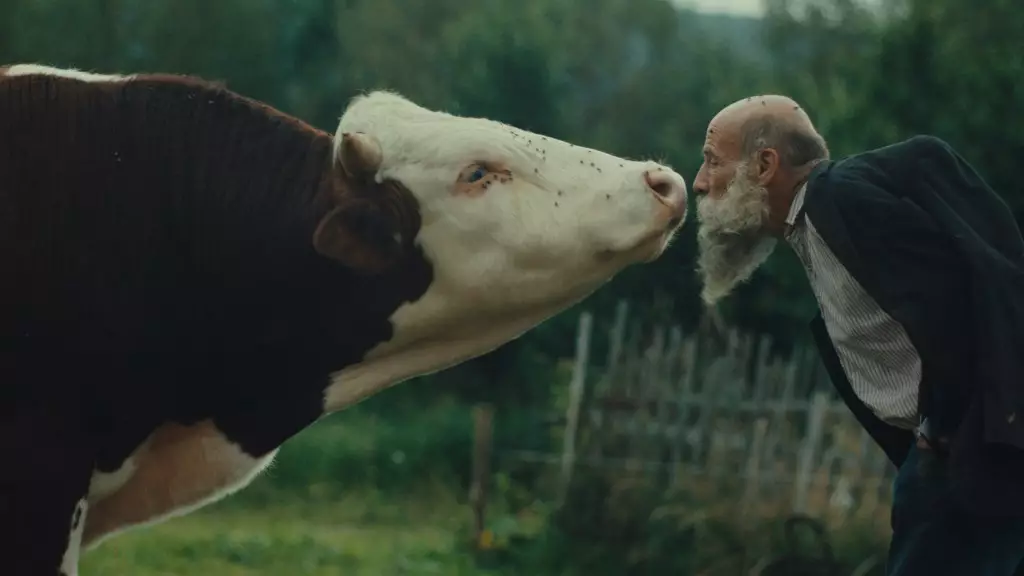In a landscape saturated with superficial portrayals of rural existence, a new documentary emerges that claims to depict the raw, unvarnished truth of life outside the urban fabric. Yet, beneath its seemingly humble veneer lies a troubling tendency to romanticize or mythologize those it portrays. This film, reminiscent in spirit of classics like Grey Gardens and Pictures of the Old World, pushes a narrative that often obscures more complex realities with its picturesque aesthetic and deliberate rustic charm. In doing so, it inadvertently perpetuates a form of voyeurism that privileges spectacle over genuine understanding, revealing a deeper flaw: the illusion of authenticity that many such documentaries peddle to satisfy a longing for “truth” that is already filtered through the filmmaker’s lens.
By elevating marginal characters into symbols of timeless, untouched wisdom, filmmakers often lean into narratives of noble simplicity. These stories become curated visions of resilient rural souls, promising viewers a glimpse into authenticity that is, in fact, carefully constructed. Such portrayals risk reducing individuals and communities to archetypes—picturesque quixotics living in harmony with nature, yet often hiding untold complexities and contradictions. The allure of discovering “the real” behind the idyllic facades of these remote worlds contributes to a superficial sense of enlightenment—one that ultimately undermines the very integrity it seeks to celebrate.
The Danger of Equating Eccentricity with Depth
The subjects of the latest documentary are a pair of rugged, middle-aged twins living in Siberian-like isolation within the Czech Republic’s Bohemian Forest. Their rustic landscape and unconventional lifestyles are front and center. The film’s narrative is heavily dictated by their boisterous conversations, drunken confessions, and idiosyncratic habits—like waving at passing trains or raging at harmless moles. While these moments inject a certain charm, they ultimately serve as distractions from the more nuanced realities of their lives. The filmmaker’s focus on eccentricity risks elevating quirkiness at the expense of depth, turning candid moments into entertainment rather than meaningful exploration.
Far too often, such documentaries conflate eccentricity with authenticity. They suggest that the mere existence outside modern society naturally cements these individuals as reservoirs of wisdom or moral clarity. This fallacy conveniently sidesteps deeper questions: How sustainable is their lifestyle? What unseen sacrifices have they made? How do systemic forces ahead of them—be it economic hardship or political disenfranchisement—shape their choices? These questions are notably absent when the documentary prefers to indulge in picturesque imagery or humorous anecdotes. This type of portrayal not only diminishes the complexity of rural life but also oversimplifies the lived experiences of those who are often misrepresented or superficially understood.
The Myth of the Noble Outsider and the Role of Power in Representation
Underlying this kind of documentary is a troubling power dynamic: the filmmaker as observer, the subjects as spectacle. It raises the question—whose story is being told? In many cases, the subjects are presented as noble outsiders, living authentically, untainted by the corrupting influences of modernity. But this narrative glosses over the agency of these individuals, turning them into passive objects of curiosity rather than active agents shaping their own destiny. It assumes a kind of moral superiority in their detachment from society, which often aligns with a subtle but persistent romanticization of rural life as inherently pure or morally upright.
This dynamic becomes particularly problematic when the documentary neglects to examine the broader social and political context. For instance, these rural characters may have had to choose their isolated lifestyles out of necessity, as a response to systemic economic disenfranchisement, government neglect, or cultural marginalization. The documentary’s failure to probe these issues perpetuates a sanitized version of rural life that ignores the struggles that often accompany such existences. It romanticizes resilience while sidestepping systemic critique—an approach that inadvertently reinforces the status quo, especially when it’s left unexamined who benefits from this portrayal.
The Need for Critical Engagement in Depictions of the Marginalized
True storytelling demands more than just capturing eccentricities or picturesque landscapes. It requires a willingness to confront uncomfortable truths and acknowledge systemic injustices. When documentaries avoid this critical lens, they risk fostering a misleading sense of harmony and self-sufficiency that is far from reality. The participants’ stories may be compelling, but they are often curated to enhance a particular narrative—not necessarily to reflect the authentic, complex realities many face.
In this case, the film’s sparing exposition about the brothers’ political activism during the Velvet Revolution suggests a missed opportunity. Their anti-regime efforts hint at a history of resistance and courage—yet instead of delving into these insights, the filmmaker seems content to present them as eccentric curmudgeons delighting in rural quirks.



Leave a Reply